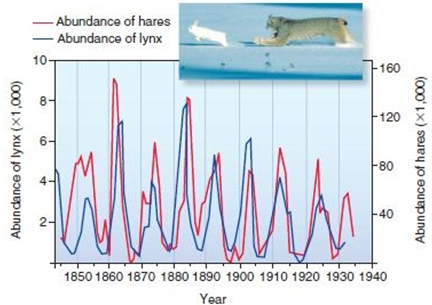Scientists have discovered that when they provide supplemental food for hares, their density tripled. The figure above shows cycles of lynx and hare populations over a century's time. What do you predict would happen to the lynx and hare populations in an area where hares were provided supplemental food for one year?

A. The lynx population and the hare population would increase simultaneously, and stay at a stable high level permanently.
B. The hare population would increase, but the lynx population would be unaffected.
C. The lynx population would decrease as hares increased due to exploitative competition, then slowly rise back to the original level.
D. The lynx population would increase 1-2 years after the hares increased, then both would continue cycling down and up.
D. The lynx population would increase 1-2 years after the hares increased, then both would continue cycling down and up.
You might also like to view...
Cells save energy and materials by using many of the same enzymes for both ________ and ________.
What will be an ideal response?
Which trait does the fossil in the accompanying figure share with modern birds?
a. long, clawed fingers on each forelimb b. teeth c. Feathers d. long bony tail e. heavy jaw
The gray matter is the inner portion of the cerebrum
____________________ Indicate whether the statement is true or false.
The association of nitrogen fixing bacteria of the genus Rhizobium with legumes such as peas is an
example of mutualism. ____________________ Indicate whether the statement is true or false.